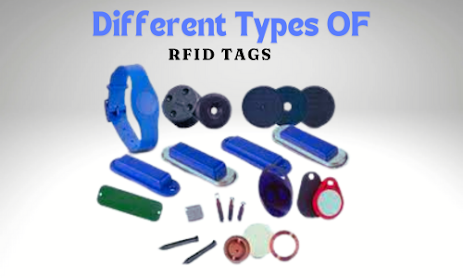Top 10 Benefits of Implementing RFID Solutions in Retail
In the ever-evolving retail industry, staying competitive requires embracing innovative technologies that streamline operations and enhance customer experiences. One such technology is Radio-Frequency Identification (RFID), which has transformed inventory management and retail operations. Retailers can significantly improve accuracy, efficiency, and profitability by incorporating RFID solutions, specifically RFID tags. Here are the top 10 benefits of implementing RFID solutions in retail.
1. Enhanced Inventory Accuracy
RFID tags
greatly enhance inventory accuracy by providing precise, real-time data on
stock levels. Unlike traditional barcode systems, RFID tags can be read
remotely, even when not directly visible, allowing faster and more accurate
inventory counts. This reduces discrepancies and ensures that stock levels are
accurately reflected in the system, preventing stockouts and overstock
situations.
2. Increased Efficiency in Inventory Management
Implementing
RFID solutions streamlines the inventory management process. RFID tags can be
scanned quickly and simultaneously, unlike barcodes that require line-of-sight
scanning. This automation reduces the time and labor involved in manual
inventory checks, allowing employees to focus on more critical tasks. The
increased efficiency also minimizes human errors, further enhancing operational
productivity.
3. Real-Time Inventory Tracking
One of
the standout features of RFID tags is their ability to provide real-time
tracking and visibility of inventory. Retailers can monitor the movement of
products from the warehouse to store shelves, gaining insights into stock
levels at any moment. This real-time visibility enables better decision-making,
ensuring that popular items are always in stock and reducing the risk of lost
sales due to stockouts.
4. Reduced Shrinkage and Theft
Shrinkage
due to theft, loss, or damage is a significant concern for retailers. RFID tags
help mitigate this issue by providing accurate and real-time data on inventory
levels and item locations. Retailers can quickly identify discrepancies and
take immediate action to address potential theft or loss. The enhanced
visibility provided by RFID also acts as a deterrent to theft, contributing to
a reduction in shrinkage and improving overall profitability.
5. Enhanced Customer Experience
Implementing
RFID solutions in retail can significantly enhance the customer experience.
With accurate and up-to-date inventory data, retailers can ensure that products
are always available, reducing the likelihood of customers leaving
empty-handed. Additionally, RFID technology enables faster checkout processes,
as multiple items can be scanned simultaneously, reducing wait times, and
enhancing customer satisfaction. Encouraging a seamless shopping experience can lead
to repeat business and foster customer loyalty.
6. Streamlined Supply Chain Management
RFID tags
provide better visibility and control over the supply chain. Retailers can
track products from the point of manufacture to store shelves, identifying any
bottlenecks or inefficiencies in the supply chain. This increased visibility
allows for better coordination with suppliers, ensuring timely deliveries and
reducing lead times. Streamlined supply
chain management improves operational efficiency and ensures that products
are available when customers need them.
7. Cost Savings
Although
the upfront cost of RFID technology may seem high, the long-term savings are
significant. By reducing the labor costs associated with manual inventory
counts and minimizing losses due to shrinkage, RFID technology provides a
strong return on investment (ROI) for retailers. Additionally, the improved
efficiency and accuracy offered by RFID solutions result in lower operational
costs, further enhancing profitability.
8. Better Data Analytics and Insights
RFID
technology generates a wealth of data that can be leveraged for advanced
analytics and insights. Retailers can gain valuable information on sales
patterns, inventory turnover rates, and customer preferences. This data-driven
approach enables better forecasting and inventory management, allowing
retailers to make informed decisions that drive sales and improve customer
satisfaction. Enhanced data analytics also helps retailers identify trends and
adjust their strategies accordingly.
9. Improved Loss Prevention
In
addition to reducing theft, RFID technology improves overall loss prevention by
providing accurate and real-time data on inventory levels. Retailers can
quickly identify and address any issues related to damaged or misplaced items,
ensuring that products are available for sale. The ability to track inventory
accurately also reduces the risk of errors and losses during transportation and
storage, further enhancing loss prevention efforts.
10. Scalability and Flexibility
RFID
solutions offer scalability and flexibility, making them suitable for retailers
of all sizes. Whether managing a single store or a large chain, RFID technology
can be scaled to meet the specific needs of the business. The portability of handheld
RFID readers allows for flexible use in various locations, including
stores, warehouses, and distribution centers. This scalability ensures that
retailers can continue to benefit from RFID technology as their business grows
and evolves.
Conclusion





Comments
Post a Comment